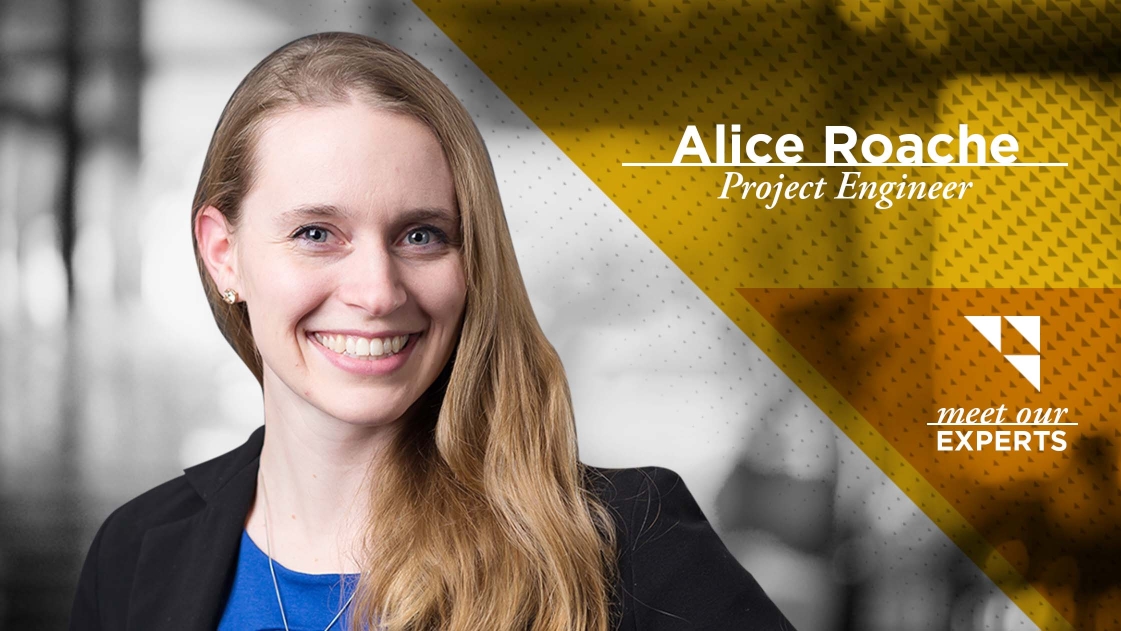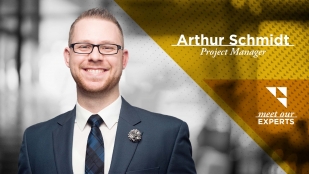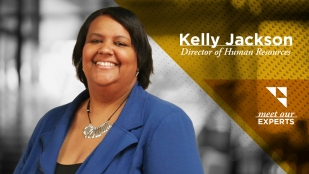OHM Advisors: Meet our Experts Series

Quick Facts about Alice
- Title: Project Engineer
- Discipline: Transportation / Diverse Structures group
- Office Location: Hancock, MI
- Years in the Industry: 7, including a grad school victory lap
- Fun Fact: Skied in Sweden at the world’s largest ski race
We chatted with Alice during a break in her work as a structural project engineer about sustainable design, lifelong professional learning, and building roofs that needed fixing.
Why Structures? Tell us how you started on this path.
It’s where I felt the magic. I wanted to build things with recyclable and renewable materials and thought environmental engineering could take me there—until I realized that those engineers spend a lot of time cleaning up other people’s messes and chose to study civil engineering instead. One day in statistics class there was a spark for me, and all the problems I’d been working on suddenly made sense. From there I took more structurally focused courses, and my passion only grew—in part because I learned that structural engineers have been blazing the trail for sustainability since the profession’s beginning. If our buildings and bridges aren’t built to last while also optimizing materials and costs, then we’re not doing our job very well. Now we’re being challenged to do that again, but even better.
What project or work experience will you always remember, and why?
In school, I interned for a forensic engineering firm and saw what can go wrong when engineers and architects miss critical design details. In one project, straight-line winds had blown the roof off of a vacation resort building (it was found floating in a golf course water hazard!). We used the scientific process to determine why and how the building had failed, documenting the extent of damage caused by wind and pre-storm conditions. It was a cool project. I had excellent mentors who took time to explain “why,” and it was great experience for a project I had a few years later involving a roof collapse at a local school (with no injuries!). On that job, I got to design classroom repairs and give guidance on repairing the known issues with the building’s remaining roof trusses, learning the importance of wood truss bracing. Recently, I authored a technical paper on the topic which I presented at the 2022 ASCE Structures Congress.
List a few adjectives that describe you.
A few that I’ve heard from others over the years are tenacious, adventurous, patient and contemplative.
What are you most looking forward to in the future for your industry—especially with the recent passage of the federal Infrastructure Investment and Jobs Act (IIJA)?
I’m excited to watch our industry strive toward (and hopefully achieve) both the American Institute of Architects’ 2030 and the Structural Engineering Institute’s 2050 objectives for net-zero Embodied Carbon in the built environment. Right now, achieving that goal isn’t possible for many clients or geographies, but I’m optimistic we’ll get there someday. I’m hopeful that the IIJA’s funding will allow building owners and municipalities to explore more carbon-friendly options that may not otherwise have been available to them. In 2050 I’ll be reaching retirement age, and that’s a pretty great goal to spend my career working on. I need to start helping right now—if our industry achieves that goal sooner, maybe I’ll retire early!
What professional skill will you always be honing?
Continuing education. The more I learn the more I realize I don’t know, so I dive deeper into questions to find the best answer or solution. I didn’t choose this field because it comes easy to me—I did it because it’s interesting enough to study for my entire career. There’s always something new to learn (or re-learn), and each topic I study can show me a different way to design or prove that the way we’ve done it is actually pretty good. The coolest part? Very often, the “new” information or solutions are rooted in the basic scientific principles and material properties we learn in grade school and the first few years of college. It's really pretty incredible seeing everything tie together.
You’ve got one day totally free from it all. What will you do?
Depending on the season, I’d either spend the day following my dog around the woods looking for birds, go mountain biking, or go skiing.
If you could only ever wear one color, which would it be?
Since I’m way too messy and like dirt too much, white is definitely out. I’ll go with blue!
Learn more about Alice and the work she does for OHM Advisors’ Diverse Structures group and the structural engineering industry.

